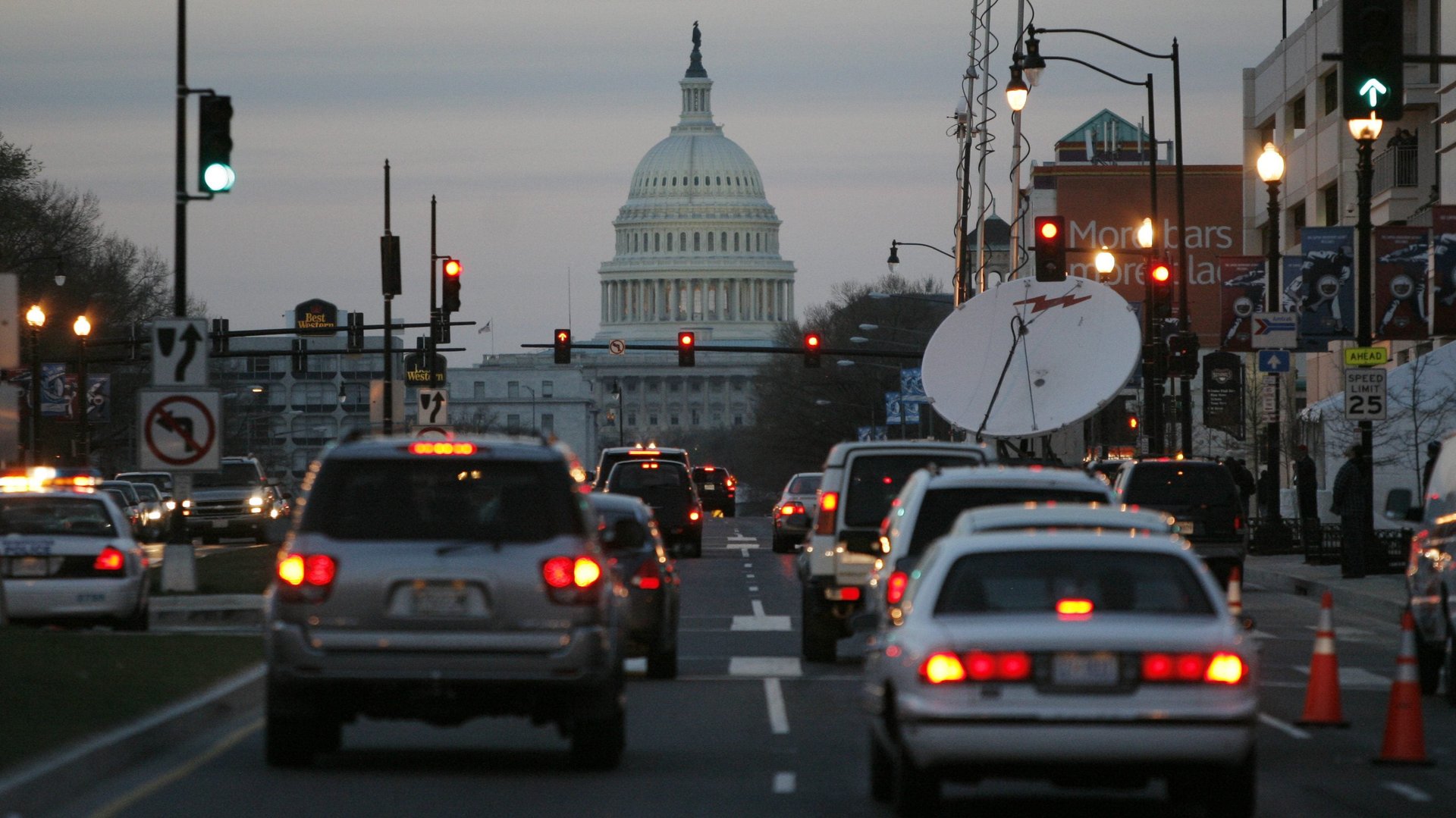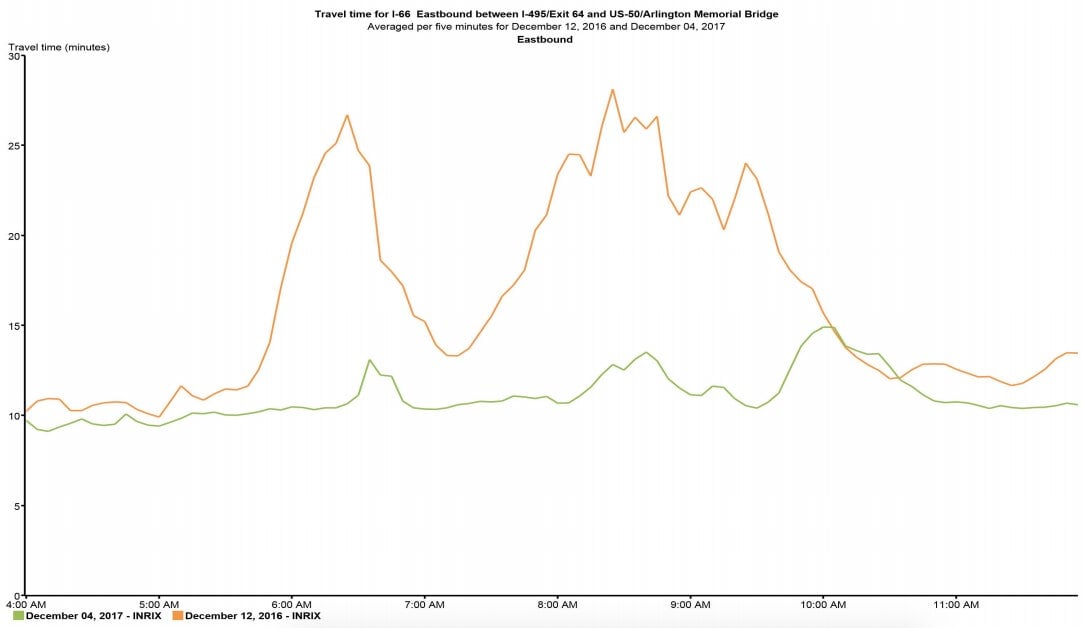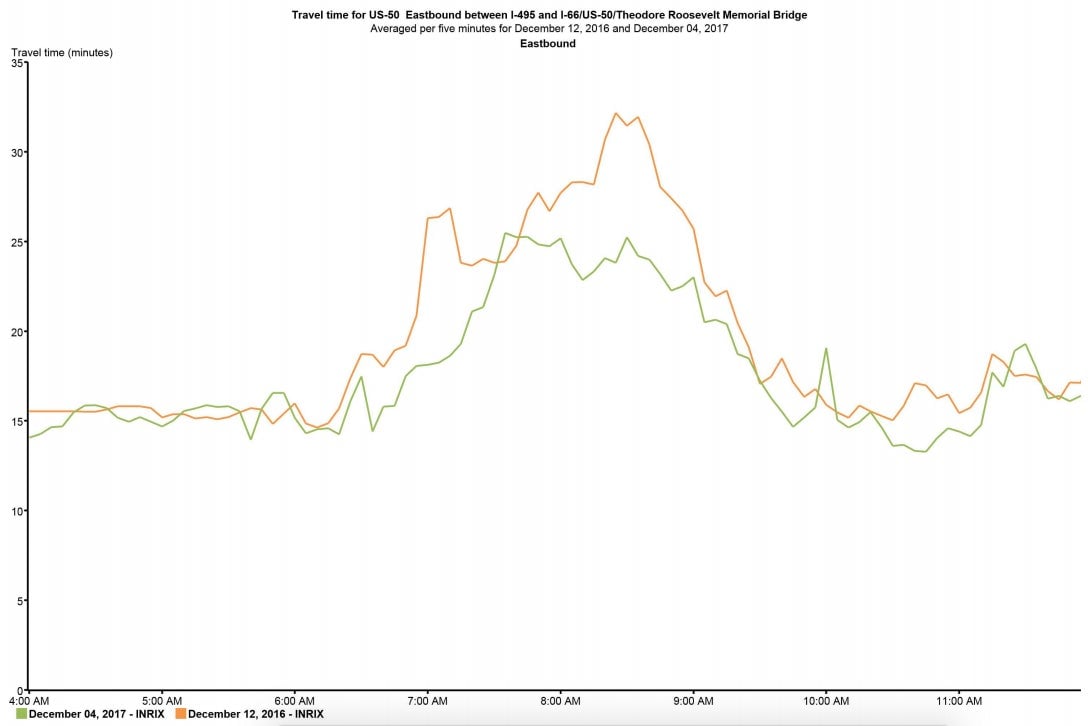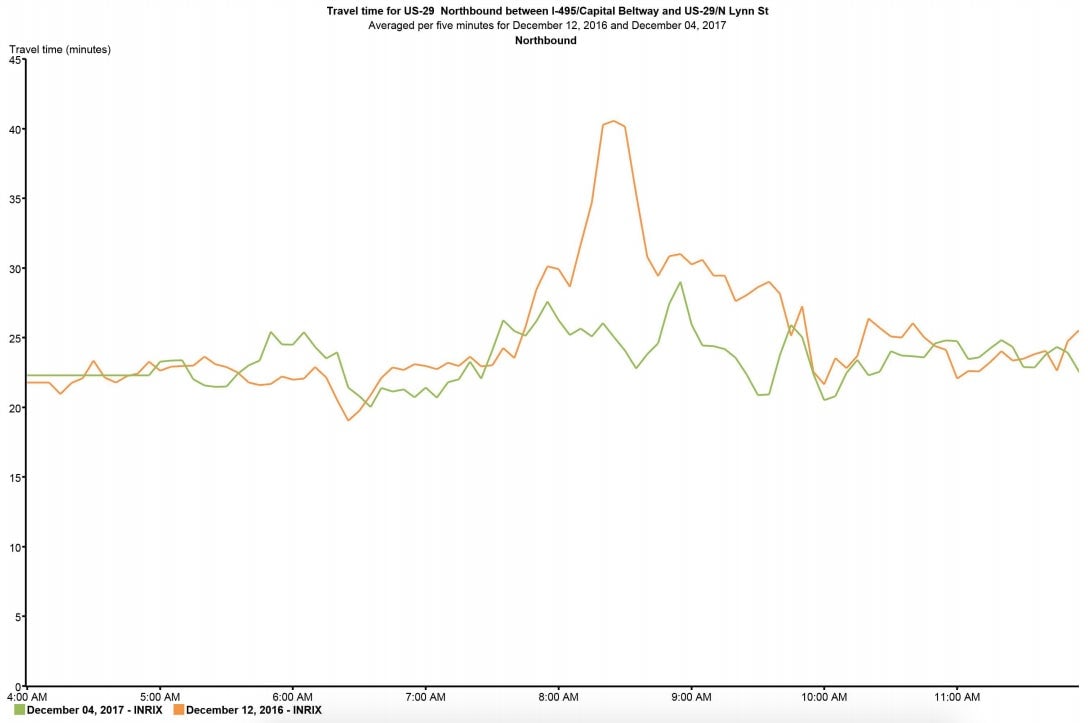Congestion is so bad in Washington D.C., tolls hit $40 last week
The idea behind demand-based toll pricing is simple: When a road is overcrowded by vehicles, increase the price of tolls to dissuade more drivers. When traffic eases up, ease the prices too.


The idea behind demand-based toll pricing is simple: When a road is overcrowded by vehicles, increase the price of tolls to dissuade more drivers. When traffic eases up, ease the prices too.
The Virginia Department of Transportation adopted such a system on Dec. 4 for the new express lanes heading to downtown Washington, DC, on Virginia’s I-66. On that day, the congestion was so bad the fee topped out at $34; the following day, the price climbed to $40. The second day’s exorbitant toll price, which is programmed to change every six minutes, lasted for only that long and scathed no more than 28 drivers, Virginia transportation secretary Aubrey Layne told NPR. On average, the tolls were around $10.70 in the morning of the first day and $3.80 in the afternoon and night.
But it was enough to unsettle drivers’ commuting patterns, just as VDOT intended. VDOT reported a 45% drop in average travel time along the 10-mile tollway stretch during morning commute hours on Dec. 4, compared with data from a similar day last year. Other roadways that didn’t have dynamic pricing showed similar traffic patterns to the previous year.



Within its dynamic pricing scheme, toll fares only apply to solo commuters; carpools of two or more pass through for free, as well as hybrid vehicles with special clean fuel license plates. They also only apply on weekdays within the hours of 5:30-9:30am eastbound and 3:00-7:00pm westbound. Drivers are charged based on the distance they drive on the tollway and are notified of the expected charge by signs at the toll entrance, though some have complained the signs aren’t early enough for them to reroute or change their commuting plans. Drivers can also use an app to check the prices in real-time. As more commuters familiarize themselves with the system and learn to ride-share or take public transit, traffic and prices should drop, officials assured.
The I-66 toll joins 40 other toll facilities in 11 states, including California, Texas, and Washington, that use dynamic pricing, according to Pat Jones, executive director of the International Bridge, Tunnel and Turnpike Association, which represents owners and operators of toll facilities and businesses that serve tolling. Given the success of the model, many other facilities in the US are considering its adoption.
Of course, not all Virginia commuters are happy about the change. “I think it’s outrageous. It’s actually an abuse of power, as far as I’m concerned,” Alan Bechara, who lives in suburban Chantilly, Virginia, told NPR. ”Why do we need to pay $40 for a public road, to use a public road? We funded this road; we paid for it.”
Some politicians also took to Twitter to express their disapproval.
But in the sixth most congested city in the U.S, according to Washington-based traffic data company INRIX, this change is necessary to loosen gridlock,VDOT emphasizes.
“What the toll is saying is, ‘We don’t want you to use it.’ I personally wouldn’t pay that toll,” said Layne to NPR. And “no one has to,” he added during a Commonwealth Transportation board meeting. “You simply could have put another person in your car.”